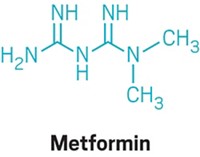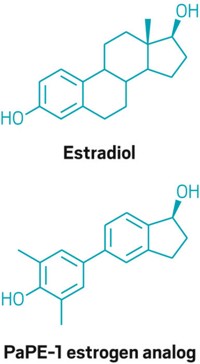Advertisement
Grab your lab coat. Let's get started
Welcome!
Welcome!
Create an account below to get 6 C&EN articles per month, receive newsletters and more - all free.
It seems this is your first time logging in online. Please enter the following information to continue.
As an ACS member you automatically get access to this site. All we need is few more details to create your reading experience.
Not you? Sign in with a different account.
Not you? Sign in with a different account.
ERROR 1
ERROR 1
ERROR 2
ERROR 2
ERROR 2
ERROR 2
ERROR 2
Password and Confirm password must match.
If you have an ACS member number, please enter it here so we can link this account to your membership. (optional)
ERROR 2
ACS values your privacy. By submitting your information, you are gaining access to C&EN and subscribing to our weekly newsletter. We use the information you provide to make your reading experience better, and we will never sell your data to third party members.
Biological Chemistry
Hydroxyurea's Revised Sickle Cell Role
Drug stimulates the production of nitric oxide in red blood cells, a finding that could improve treatments
by Stuart A. Borman
August 23, 2010
| A version of this story appeared in
Volume 88, Issue 34
In a study that could lead to better sickle cell disease treatments with fewer side effects, Michigan State University researchers have determined a new mechanism of action for the drug hydroxyurea (Eur. J. Pharmacol., DOI: 10.1016/j.ejphar.2010.07.012). Hydroxyurea is an approved medication for treating sickle cell disease, a life-span-shortening condition caused by a hemoglobin mutation. But the way the drug works at the molecular level is not clearly understood. A leading hypothesis is that the drug boosts red blood cell production of fetal hemoglobin, which binds oxygen with unusually high affinity and thus alleviates sickle cell symptoms. Michigan State’s Dana M. Spence and coworkers now report using flow-based assays, atomic absorption spectroscopy, electron paramagnetic resonance, and other techniques to determine that hydroxyurea instead stimulates the production of nitric oxide in red blood cells. The boost in NO increases the cells’ ability to release adenosine triphosphate, which in turn improves blood flow. The findings could lead to new or improved sickle cell drugs that target the NO and ATP pathways in blood cells, the researchers note.





Join the conversation
Contact the reporter
Submit a Letter to the Editor for publication
Engage with us on Twitter